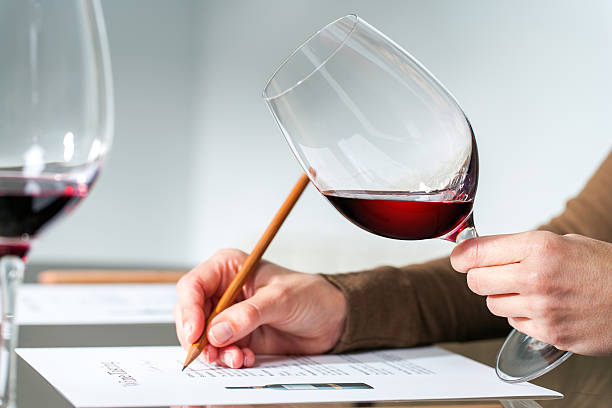Wine, a timeless elixir cherished by cultures across the globe, owes its complexity, aroma, and flavor profile to a delicate yet fundamental process: fermentation. While wine enthusiasts often marvel at the bouquet of fine vintage or the rich depth of a robust red, understanding the intricate dance of microorganisms and the chemistry behind fermentation can deepen one’s appreciation for this ancient art. In this exploration of Wine Making: Fermentation 101, we delve into the transformative process that turns humble grape juice into the nectar of the gods.
The Basics of Fermentation: At its core, fermentation is a metabolic process wherein microorganisms, most notably yeast, metabolize sugars in the absence of oxygen, converting them into alcohol, carbon dioxide, and various flavorful compounds. In the realm of winemaking, this process is indispensable, as it not only imbues the wine with alcohol but also imparts nuanced flavors and aromas crucial to its character.
Yeast: The Magical Microorganism: Yeast, a single-celled fungi ubiquitous in nature, plays a starring role in fermentation. Saccharomyces cerevisiae, the primary yeast species employed in winemaking, consumes the natural sugars, primarily glucose and fructose, present in grape juice through a process known as glycolysis. This biochemical pathway breaks down sugars into pyruvate, generating adenosine triphosphate (ATP) and yielding two molecules of ethanol and two molecules of carbon dioxide as byproducts.
The Fermentation Journey: The journey from grape to glass begins with the careful selection of grapes, with winemakers paying meticulous attention to factors such as varietal, ripeness, and terroir. Once harvested, the grapes undergo crushing to release their juice, which is then transferred to fermentation vessels. Traditionally, these vessels were often oak barrels, but modern winemaking commonly utilizes stainless steel tanks or concrete vats due to their superior temperature control and cleanliness.
Temperature Control: A Critical Factor: Temperature exerts a profound influence on fermentation kinetics and the resulting wine’s sensory profile. While warmer temperatures accelerate fermentation, cooler temperatures preserve delicate aromas and flavors. Winemakers employ various techniques, such as temperature-controlled fermentation tanks and cooling jackets, to maintain optimal conditions throughout the process.
Alcoholic Fermentation: The primary fermentation, also known as alcoholic fermentation, typically lasts from several days to several weeks, depending on factors such as grape variety, sugar content, and desired wine style. During this phase, yeast cells multiply rapidly, converting sugars into alcohol and carbon dioxide while releasing heat as a byproduct. Monitoring the fermentation progress through measurements of sugar levels and temperature allows winemakers to intervene as needed, adjusting conditions to guide the process toward the desired outcome.
Malolactic Fermentation: Enhancing Complexity: In addition to alcoholic fermentation, many wines undergo a secondary fermentation known as malolactic fermentation (MLF). Unlike alcoholic fermentation, which is driven by yeast, MLF is catalyzed by lactic acid bacteria, particularly Oenococcus oeni. During MLF, malic acid, a tart compound naturally present in grapes, is converted into softer-tasting lactic acid, imparting a smoother texture and complex flavor profile to the wine. While MLF is not universally practiced, it is a common technique employed in the production of many red wines and some white wines, particularly those destined for extended aging.
The Influence of Terroir: While fermentation itself is a controlled biochemical process, the nuances of terroir—the unique combination of soil, climate, and geography—exert a profound influence on the outcome of fermentation. Grapes grown in different regions, even from the same varietal, can yield wines with distinct aromatic profiles and flavor characteristics. Winemakers who are keenly aware of terroir’s impact may adjust their fermentation techniques to preserve and enhance these unique qualities, celebrating the diversity of expression inherent in the fruit.
The Role of Oxygen: While fermentation typically occurs in an anaerobic environment, oxygen management remains crucial throughout the winemaking process. Controlled exposure to oxygen during fermentation can help promote yeast health and enhance the wine’s stability, while excessive oxygen exposure post-fermentation can lead to oxidation and undesirable off-flavors. Modern winemaking practices incorporate various strategies, such as micro-oxygenation and inert gas flushing, to carefully regulate oxygen levels and preserve the wine’s freshness and longevity.
In the realm of winemaking, fermentation serves as the transformative alchemy that turns grapes into wine, unlocking a universe of flavors, aromas, and textures. From the humble fermentation vessels to the intricacies of yeast metabolism, every step of the process contributes to the creation of a singular beverage steeped in tradition and innovation. As we raise our glasses to toast the fruits of this ancient craft, let us savor not only the wine itself but also the rich tapestry of science, art, and culture woven into every bottle. Cheers to the magic of fermentation, where grape juice transcends into liquid poetry.



